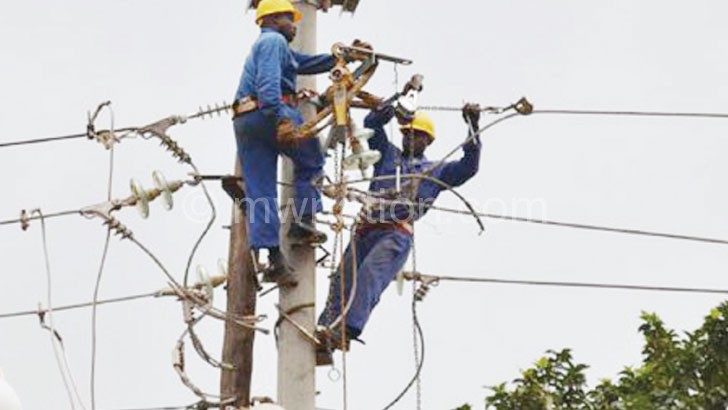
Frank Ligomeka sells drinks in his Nampula shop at Dzenje Trading Centre in Phalombe. However, the rural business hotspot dotted with electricity poles and wires has no electricity, slowing the 28-year-old’s race to beat the country’s massive youth unemployment.
He states: “I opened the shop five years after completing secondary education. I had no skill and no job. When Malawi Rural Electrification Programme [Marep] erected the poles and wires 10 months ago, I was happy.
“In my mind, I saw the trading centre growing, numerous people coming here and money changing hands. I even constructed a barber shop.”
However, thirsty passers-by often shun Ligomeka’s shop due to lack of electricity for cooling drinks.

“When people refuse warm drinks, I see money get away because Dzenje is still excluded,” says the trader, who earns at least K40 000 a month for his family of three children.
With electricity, he say, his income would more than double. Like most businesspeople, he has already wired his grocery shop and barber shop.
“Many shops close at sunset because lighting with candles and torches is costly. With electricity, we can do business late in the night,” he says.
The Department of Energy Affairs lists Dzenje among 749 trading centres transformed by Marep phase eight, yet no shop, no home and no public facility has been electrified.
Energy poverty
The community is still excluded as do 96 percent of the country’s rural population 40 years since Electricity Supply Corporation of Malawi (Escom) rolled out Marep in 1980.
The sluggish State-run initiative has delivered electricity to just four percent of the rural majority in 40 years.
At the present pace, it needs a staggering 960 years to connect everyone in remote areas, home to eight in every 10 Malawians.
In fact, the country may achieve in 2980 energy-for-all targets meant for the current decade.
Sustainable Development Goals to end poverty by 2030 promote access to affordable, reliable, sustainable and modern energy for all.
According to the census, Escom supplies 12 of the population, with 30 percent of urban dwellers connected to its grid.
But the energy poverty in rural localities brings into question Marep’s longstanding strategy of extending the country’s ailing power grid to trading centres, effectively excluding productive citizens and production zones in nearby villages.
Department of Energy Affairs spokesperson Saidi Banda concurs that the country cannot eliminate the huge unmet need for electricity by extending Escom’s grid alone.
He explained: “The revised National Energy Policy recognises the challenges of continually extending the grid because some rural populations live in hard-to-reach places.
“The policy recommends that we diversify the way we generate and distribute electricity, including the use of solar, water and wind mini-grids to accelerate rural electrification. Mini-grids produce power right in the communities where it is needed.”
Banda sees increased investment in mini-grids reduce pressure on the undersupplied hydropower system blighted by persistent blackouts.
“We’ll be saving electricity for people living beyond trading centres where mini-grids are not feasible. But this is not free electricity. We expect people to pay for it and use it to end poverty,” he says.
But activists for green and inclusive energy say rural electrifications remains too slow for the programme bankrolled by levies on fuel price and urban electricity bills.
“Rural access is to us still on the lower side. We wish we could have done more. The 2018 census shows that 84 percent of people in Malawi live in rural areas. This means we are still doing them a disservice,” says Edgar Bayani, director of Community Energy Malawi (CEM).
Valuing people
Bayani calls for a rapid shift in policy priorities and implementation for greater efficiency, transparency and accountability.
“During the launch of Sitolo Solar Minigrid in Mchinji, I was happy that both the Minister of Energy and deputy director responsible for Marep promised to make resources available for off-grid interventions. We seriously need to implement the Malawi Renewable Energy Strategy to the letter,” he says.
The strategy estimates that the country can actually connect 27 percent of the population by establishing decentralised mini-grids in communities of 250 people located at least 5km from the grid.
At the current speed, Ligomeka says many Malawians will continue to live without electricity.
He says: “If this continues, many rural people, their children and generations to come will die without experiencing the wonders of electricity. A nation that values its people cannot forget where the majority lives.”
Source: The Nation Online_January 16, 2020_by James Chavula-Staff Writer
